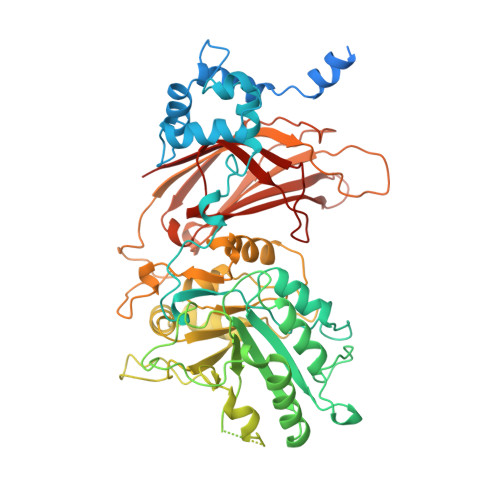Structural mapping of the catalytic mechanism for a mammalian phosphoinositide-specific phospholipase C.
Essen, L.O., Perisic, O., Katan, M., Wu, Y., Roberts, M.F., Williams, R.L.(1997) Biochemistry 36: 1704-1718
- PubMed: 9048554
- DOI: https://doi.org/10.1021/bi962512p
- Primary Citation of Related Structures:
1DJW, 1DJX, 1DJY, 1DJZ - PubMed Abstract:
The crystal structures of various ternary complexes of phosphoinositide-specific phospholipase C-delta 1 from rat with calcium and inositol phosphates have been determined at 2.30-2.95 A resolution. The inositol phosphates used in this study mimic the binding of substrates and the reaction intermediate and include D-myo-inositol-1,4,5-trisphosphate, D-myo-inositol-2,4, 5-trisphosphate. D-myo-inositol-4,5-bisphosphate, and D,1-myo-inositol-2-methylene-1,2-cycli?monophosphonate. The complexes exhibit an almost invariant mode of binding in the active site, each fitting edge-on into the active site and interacting with both the enzyme and the catalytic calcium at the bottom of the active site. Most of the active site residues do not undergo conformational changes upon binding either calcium or inositol phosphates. The structures are consistent with bidentate liganding of the catalytic calcium to the inositol phosphate intermediate and transition state. The complexes suggest explanations for substrate preference, pH optima, and ratio of cyclic to acyclic reaction products. A reaction mechanism is derived that supports general acid/base catalysis in a sequential mechanism involving a cyclic phosphate intermediate and rules out a parallel mechanism where acyclic and cyclic products are simultaneously generated.
Organizational Affiliation:
Centre for Protein Engineering, MRC Centre, Cambridge, U.K.

















